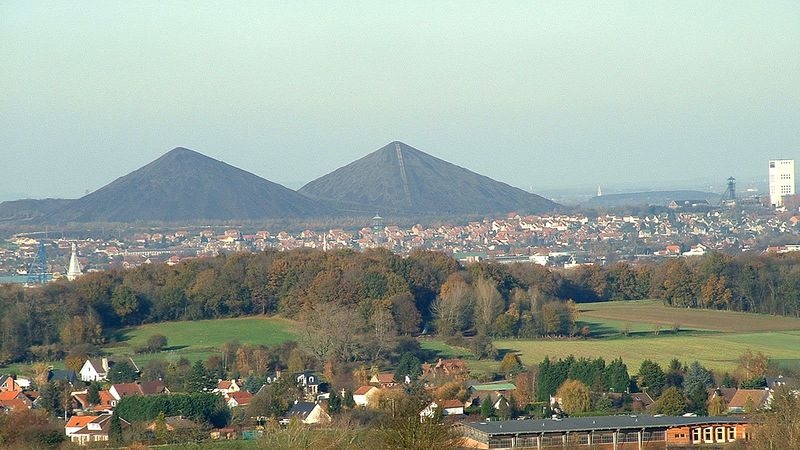In the commune of Loos-en-Gohelle, a former mining town in the Nord-Pas-de-Calais region of France, are a series of five conical hills, of which two reaches 146 meters in height. These are slag heaps, the residue of 130 years of mining in the rich coal seam underneath Loos-en-Gohelle that extends west to east just below the Belgian border. The twin peaks, locally known as "terrils" and commonly dubbed the "11-19" — the figures refer to the number of the mine pits — are the highest slag heaps in Europe, and can been seen from miles around.
The terrils are familiar to anyone who has travelled on the motorway or Eurostar train between London and Calais or Brussels. These massive black pyramids dot the entire landscape. There are over 350 such terrils in the Nord-Pas-de-Calais region, but no one is sure of the exact number because some have been exploited for road-ballast, some have been leveled, and others have gradually been taken over by trees and vegetation and are hard to spot. Most are small and irregularly shaped, but the pair at Loos-en-Gohelle are exceptional. They are also one of the last pits in operation, before the coal industry went out of business in 1986.
The once despised slag heaps are now a symbol of proud mining heritage.
"The terrils represent all the toil and the hardship of our forefathers," said Patrick Offe, a guide at the association La Chaine des Terrils in Loos-en-Gohelle, to BBC. "Because of the mines, the people here were tough and the bonds between them were strong. Life was extremely hard. Today we are proud of that."
And nature is slowly transforming these barren heaps of soil into fertile grounds. The 11-19 are now home to more than 200 species of plants, 82 species of birds, two species of amphibians and reptiles, twelve species of mammals, nine species of dragonflies and 53 species of butterflies. The surprising biodiversity has been exploited by the local people in various ways. In the village of Rieulay, a local businessman takes his flock of 40 goats up the terril to graze upon the abundant brush. In another terril, a few miles to the west, another businessman grows vines to make wine.
Some of the terrils, including the 11/19, are now on the UNESCO world heritage list.

Terril of 11/19 in Loos-en-Gohelle overlooking the town of Lievin. Photo credit



Terril n° 87 in Lavoir Hénin is another terril that’s on UNESCO world heritage site list. Photo credit
This terril in Noeux-les-Mines has been converted into an artificial ski slope. Photo credit
Sources: BBC / Wikipedia / Lens-Liévin

















Until the rains sends them sliding down onto the houses below!
ReplyDeleteThought the same. "Proud heritage". Bollocks.
Delete